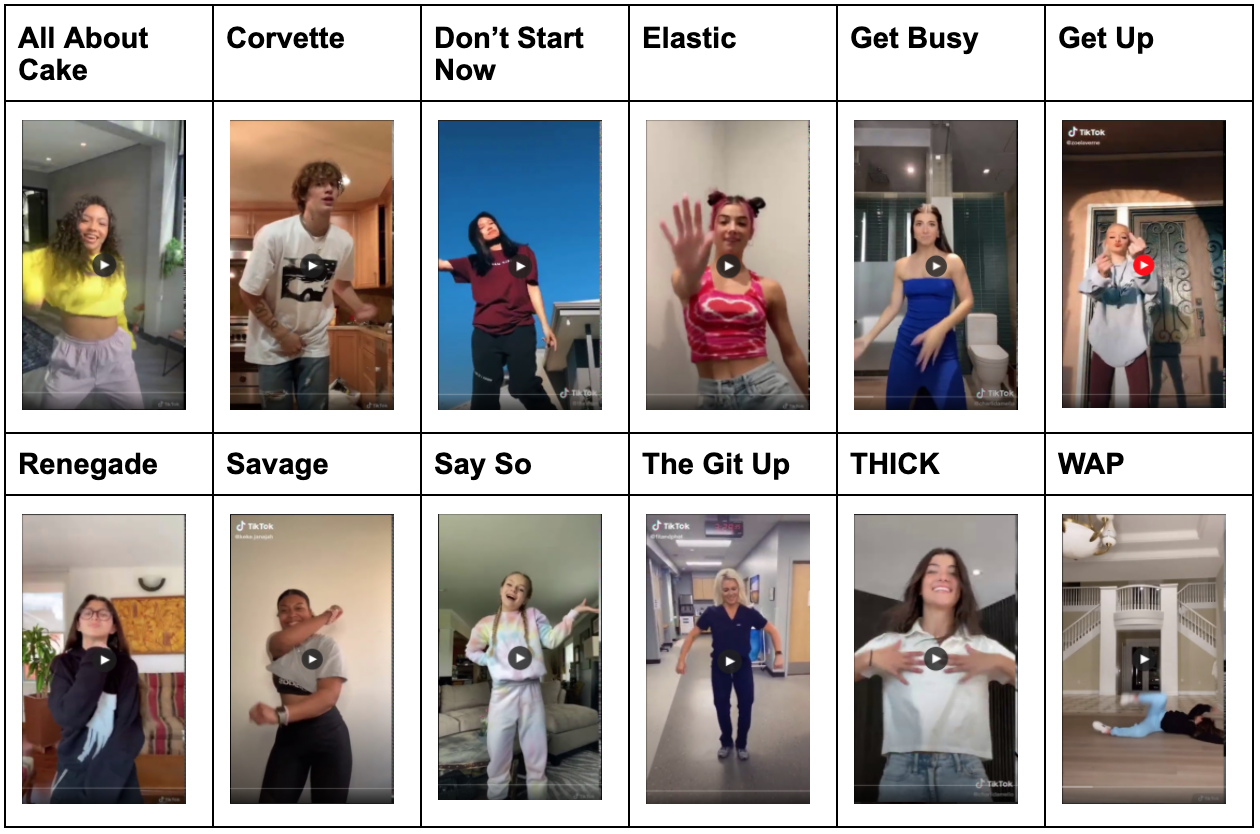
EVALUATING POSE SIMILARITY IN TIKTOK VIDEOS
FINAL PROJECT FOR CIS 581 - COMPUTER VISION AND COMPUTATIONAL PHOTOGRAPHY - FALL 2020
Python
OVERVIEW
This project was for CIS 581, Computer Vision and Computational Photography and I worked on it with Alex Chen, James Rao, Jonathan Lee, and Tatiana Tsygankova. The goal of our project was to apply existing pose detection techniques to evaluate the accuracy of TikTok dance videos, which have become notably popular during the COVID lockdown.
We collected and manually evaluated 190 videos (15 replications of 11 different TikTok dances, and 25 renditions of a 12th dance) to be used as training and testing data. We then used the OpenPose library to perform pose detection on the videos, and built a neural network using PyTorch to perform the predictions. The results revealed that the model usually predicted an accuracy close to the mean of the labels; occassionally, however, the model predicted a wider range of values across specific test sets that were relatively close to the actual labels, demonstrating the potential of our model.
DEVELOPMENT
To implement our project, we first did some initial data collection of popular TikTok dances and then set up a 3-stage pipeline, consisting of a pre-processing stage, normalization stage, and finally our machine learning stage. In the pre-processing stage, we used OpenPose to output the keypoints of each frame for each video of a specific dance and parsed those keypoints. The associated labels, which represent how accurate a dance was (ranging from 1 to 10) as compared to the "model" dance (10), were parsed in a .csv file.
For the normalization stage, we utilized OpenPose’s normalization feature to convert the keypoint coordinates from their original scale to a [0, 1] scale. This is helpful for videos taken with different frame dimensions and for dancers at varying distances from the camera. Additionally, we centered the frame around the nose keypoint by setting its coordinate values to [0.5, 0.5] and translated all other keypoint coordinates accordingly.
Finally, we built a neural network using PyTorch for the purpose of evaluating how accurate interpretations of particular TikTok dances were as compared to a “model” rendition. The network will output a number in the range 0 to 10 that describes how accurate a video of the dance is as compared to this “model” rendition. We used a 16/4/5 (training/validation/test) split of the data on the “All About Cake” dance, and 11/2/2 on the rest.

